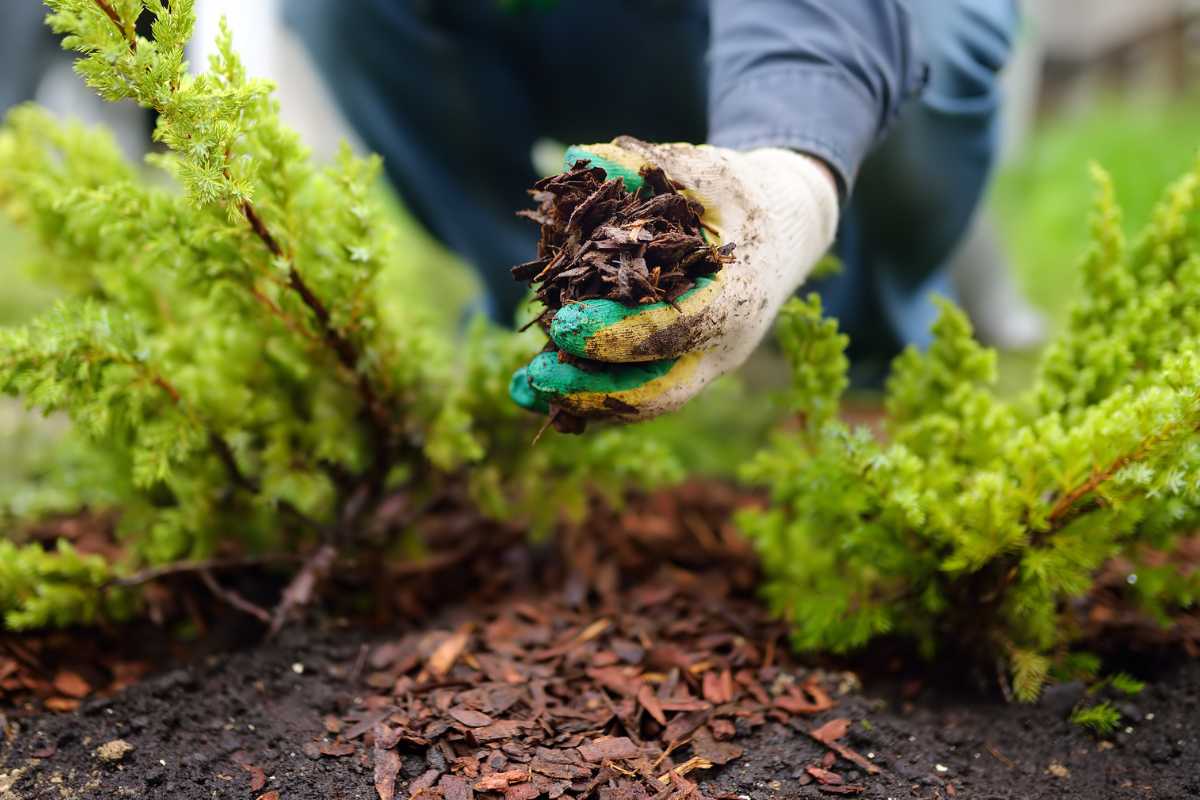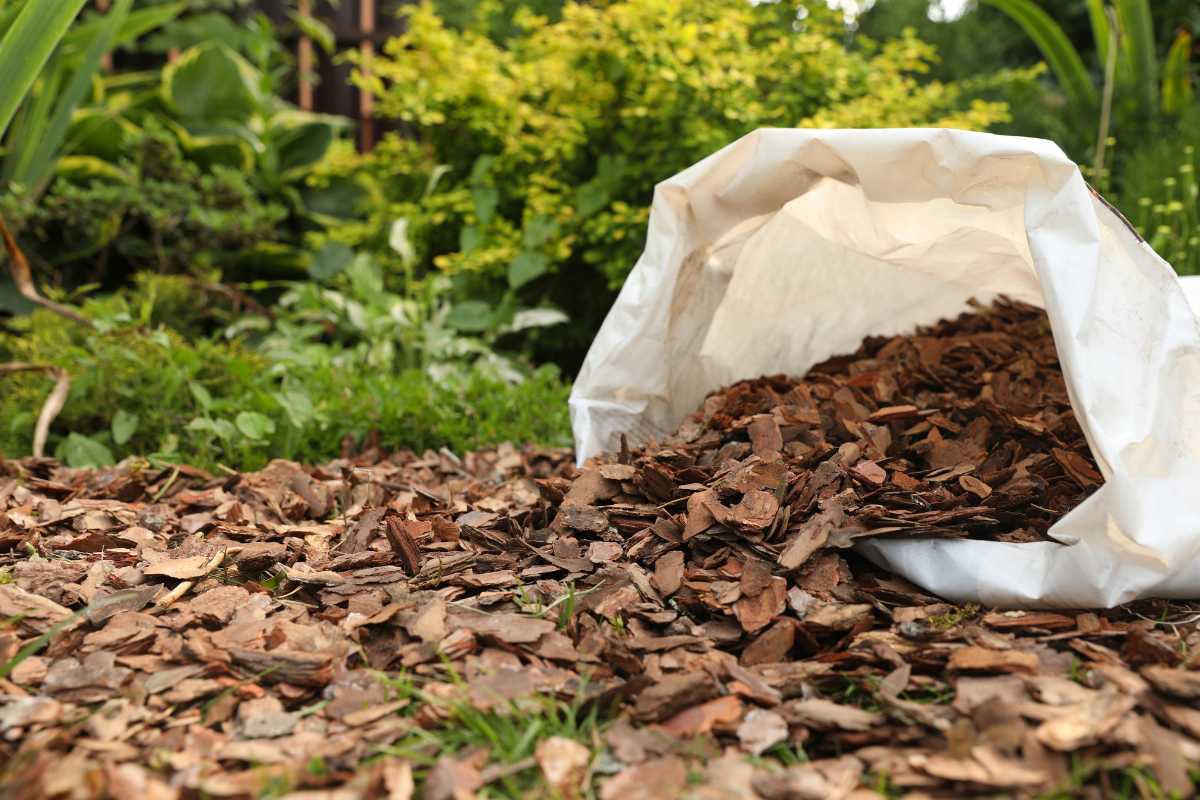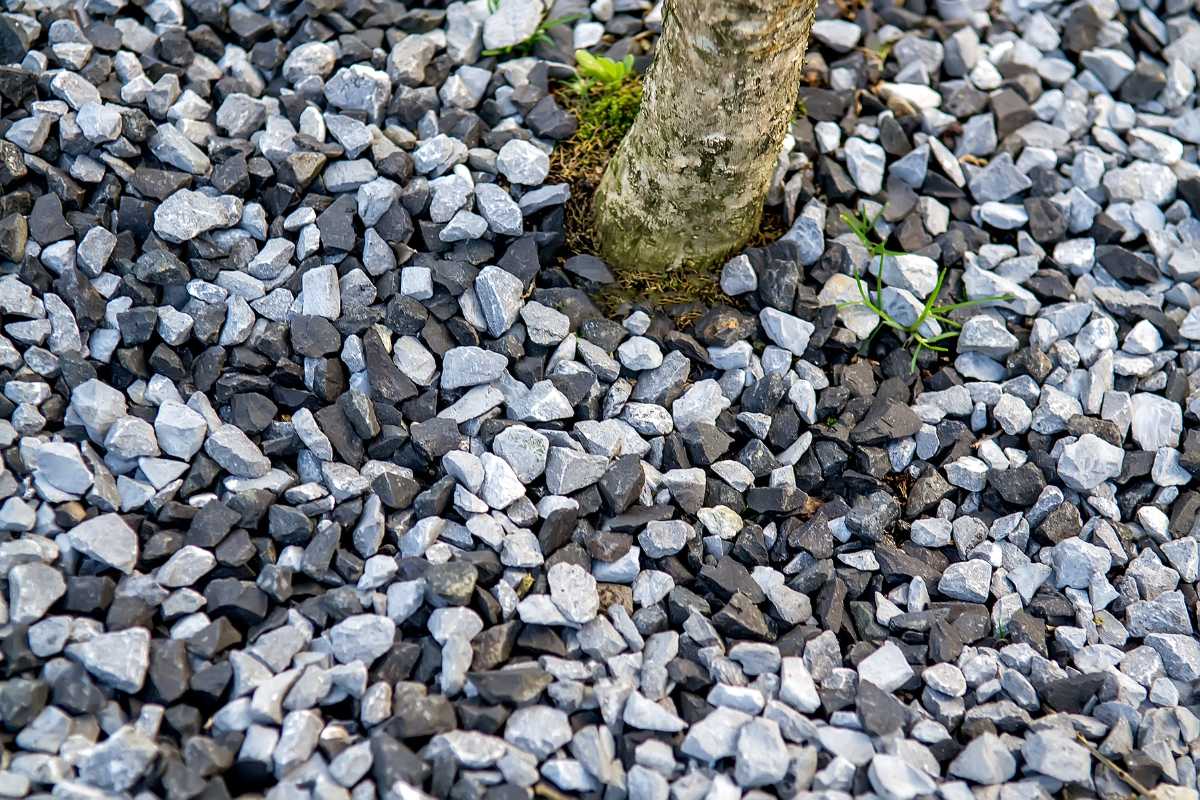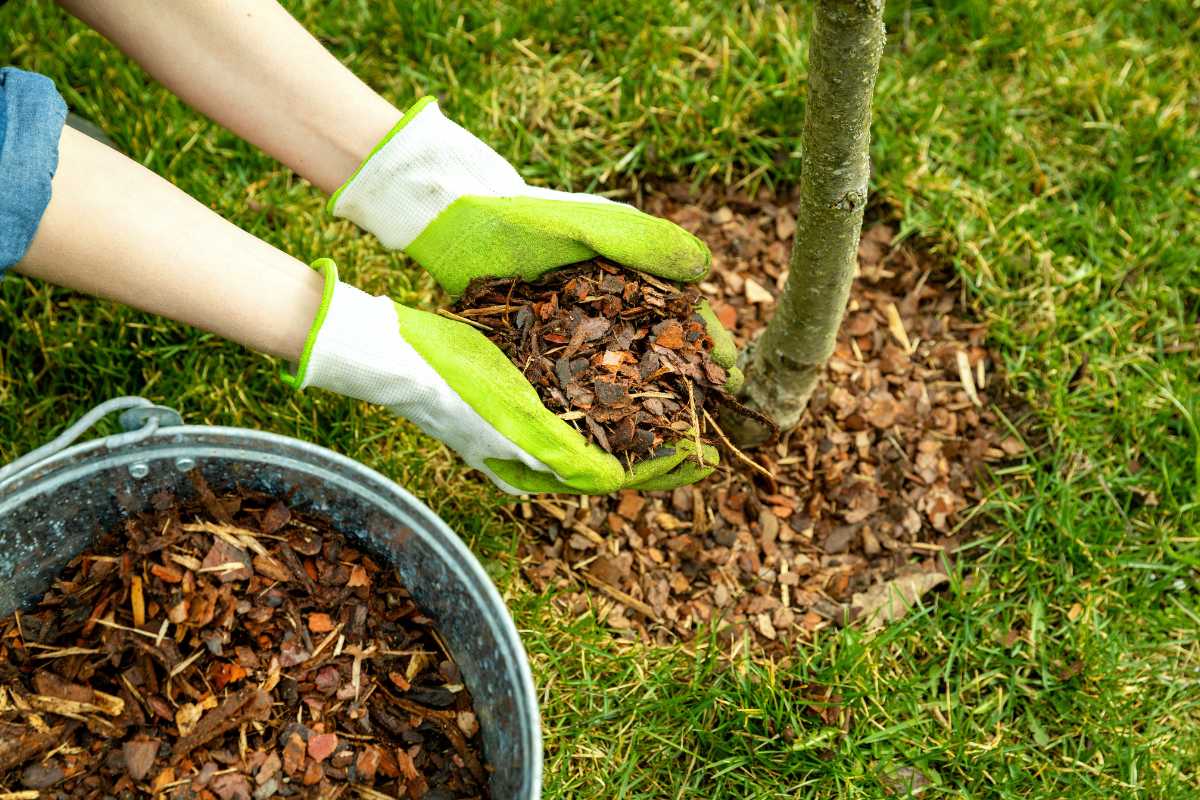You may have heard the term ‘mulch’ and wondered what it refers to.
Well, it’s actually a technique rather than one thing. Different materials can be used as mulch and they serve the purposes of controlling soil moisture and soil temperatures.
The main reason why you need to use mulch is because of your garden soil. If you don’t add any type of material on top of your plants, then they may not grow properly. So, if you want them to thrive in your garden then you should definitely consider using some form of mulch.
In this article I’m going to go through what mulching entails, what the benefits of it are, and what you can use as a mulch.
- Related: All About Soil
What is Mulch?

Mulch is a layer of material on top of the soil surrounding your plants. This can be used for weed suppression, moisture retention, to add nutrients, or all three.
Mulching is one of the best ways to give nutrients to your established plants as you don’t need to dig it in.
However, mulches are not always for nutrients. Decorative mulches can add to the aesthetics of your garden, while also suppressing weeds. You can use many things for mulch, depending on your needs.
Mulches are used on outdoor plants, and are especially useful in vegetable patches, for bushes and shrubs, and for use as borders of the garden bed.
You can also use mulch for potted plants as they are good at aiding moisture retention and helping regulate the soil’s temperature.
Mulch Benefits
A layer of mulch offers a number of benefits when applied correctly.
The top ten benefits of mulch are:
- You can add natural fertilizer, such as compost, without disturbing the roots of your plants.
- You can also make your garden look tidier and reduce your workload, as mulch helps suppress unwanted vegetation and weed growth. Weed seeds won’t be able to germinate.
- It helps your soil retain moisture, which is extremely beneficial during the hotter months. When you apply mulch around your plant roots, it will help keep the soil moist by preventing evaporation from taking place.
- It helps your soil heat up in the spring.
- It improves the organic matter content of your soil without the need for digging.
- It protects your plants roots from extreme temperatures – cold and hot.
- It encourages beneficial organisms in the soil.
- Deters some pests.
- If you have a vegetable garden, it forms a protective barrier between your crops and the soil.
- Decorative mulches can give your garden borders an appealing finish.
Types of Mulch
There are different types of mulch material you can choose from. The two main types of mulch are organic mulches and inorganic mulches (synthetic mulches).
Organic Mulches

This is anything that will break down over time and is made from organic materials. The benefits of these kinds of mulch is that it will improve the soil quality and add nutrients to the soil over time.
You can use organic mulch in place of fertilizers, as the nutrients will filter down into the soil when the plants are watered.
However, they will need to be topped up over time as they decompose. They aren’t the most attractive if you’re going for aesthetics.
The best organic mulches are:
- Compost mulches – If you are composting at home, adding a 2-3 inch layer of compost over the soil is a great way to add nutrients during the growing season.
- Processed bark mulches
- Wood chip mulch
- Straw mulch – This is especially good for strawberries.
- Shredded newspaper
- Leaf mulch – The same ones that drop from trees in the fall and winter. Use shredded leaves for flexible coverage.
- Well rotted manure – make sure this is manure from a herbivore, and that it has been left for between 2 and 6 months. Don’t use fresh manure as it can burn plant roots.
You can also use spent hops and seaweed, although the former is poisonous if eaten by dogs. The latter may contain high levels of salt, so you should use both with caution.
Living mulch is becoming more common, as it also helps prevent soil erosion. Living mulches are cover crops that do everything other mulches do, plus they keep the soil in place with their roots.
Living mulches are dug into the soil at the end of the growing season to replenish the soil nutrients. Popular living mulches include legumes, smooth meadow grass clippings, and white clover.
Read more about Bark Mulch vs Wood Chips.
Inorganic Mulches

These mulches are made of non-organic materials and won’t help improve the condition of the soil, nor will they add nutrients. However, they are great for moisture retention and weed suppression.
They are also more decorative than the biodegradable mulches, and will last indefinitely. Non-organic kinds of mulch can come in a variety of colors.
When using non-biodegradable mulch, keep in mind that light-colored materials will reflect the sunlight and keep roots cool, while dark-colored materials will warm up the soil.
Materials that can be used as inorganic mulch are:
- Decorative slate
- Sea shells
- Tumbled, recycled glass mulch
- Rubber mulch
- Shingle
- Pebbles
- Stone chippings
- Gravel
- Woven sheets / Landscape fabric
You can also use landscape fabric to suppress weeds. Although they don’t look great, you can use them in conjunction with other non-biodegradable mulch to hide the sheet. Or you can use organic mulch on top of the fabric.
Mulching Tips

There are many ways to apply mulch. Here are the top tips that I’ve learned through the years:
- Make sure you add your mulch on top of damp soil.
- Remove any weeds first. Do this by hand to avoid damaging your plant roots.
- Don’t add mulch if the soil is frozen.
- Mulch trees and shrubs to the radius of the canopy to give them the most benefit.
- Don’t mulch Mediterranean ground cover plants, such as thyme, as they don’t like too much moisture around the stems.
- Don’t allow mulch to come in direct contact with stems or trunk, as it can cause softening and lead to disease.
- Always add a thick layer of organic mulch. Thick layers will block sunlight from weeds, keep in the moisture better, and insulate the soil effectively.
- Don’t use freshly chipped wood. Leave chippings out for a few weeks before using them as mulch.
- Spread out your mulch evenly across the area where you want to grow vegetables or flowers. It doesn’t have to be perfect; just spread enough to get started.
- Water thoroughly after applying the mulch. Make sure all areas receive equal amounts of water.
- Best to wait until the following spring before planting seeds or seedlings.
Types of Mulch Final Thoughts
The type of mulch you use will very much depend on your desired result.
If you are growing fruit or vegetables, then organic mulches will be the best type to use. If you want to decorate your garden and flower beds, then non-organic mulch is the betterway to go.
Mulch is very popular with no-dig gardeners, as they add nutrients to the soil without the need to dig over their vegetable patch every year. There is also a suggestion that by not digging in compost, the beneficial organisms that live in the soil will benefit by not being disturbed.
Organic mulches are a great way of fertilizing your plants and trees without needing to disturb the roots. Non-organic mulches will save you time and effort by suppressing weeds and reducing the amount you need to water your plants in the dryer months.
Types of Mulch FAQs
What is the best type of mulch?
The best type of mulch is one that suits your needs. Organic mulches are good at keeping weed growth down, but may not provide sufficient nutrition for certain types of crops. Non-organic mulch provides more nutrients than organic mulch, but does require regular watering during the summer months. The choice depends entirely upon what you’re trying to achieve.
What are the different types of mulch?
The two main types of mulch include Organic and Non-organic mulches. Organic mulches are good at keeping weed growth down and adding nutrients to the soil. They are also useful when you’re trying to reduce watering requirements. However, they do require more maintenance than non-organic mulches. Non-organic mulches include gravel, pebble, stone chips, bark, shredded leaves, straw, hay bales, etc.
When should I use mulch?
Mulch should be used when you plan to plant something new into the bed. This includes annuals, perennials, bulbs, shrubs, vines, grasses, herbs, and other small flowering plants. When you apply mulch, make sure you leave some space between each piece, so there’s room for air circulation.
What kind of mulch do landscapers use?
The kinds of mulch that landscapers use vary depending on the landscaping project. For example, if they’re working on an outdoor patio, they’ll probably use sand. On the other hand, if they’re doing work around a swimming pool, they might choose to use concrete pavers instead. For lawns, landscape professionals will use more organic materials like shredded bark mulch.
How long can I expect my mulch to last?
This really varies from product to product. Some products only last about 6 weeks while others can last up to 2 years. In general though, it takes approximately 3 – 4 seasons for most mulches to break down completely. As it starts to break down, it will also start to lose its effectiveness. It’s important to keep up with the upkeep of your mulch throughout the seasons.
What is the best way to apply mulch?
The best way to apply mulch is using a trowel or shovel. If you don’t have either tool, then just grab handfuls of material and spread them out evenly across the area where you want to place your mulch. Make sure you cover all areas of the planting beds before applying any additional layers.
Is mulching harmful to my plants?
No! Mulching doesn’t harm your plants. In fact, many people believe that mulched gardens look better because they appear healthier.
What type of mulch does not attract bugs?
Non-organic mulch will not attract bugs because they are not live organisms. Insects are usually attracted to organic matter such as decaying vegetation, dead insects, animal droppings, compost piles, and rotting fruit. These items contain nitrogen which attracts insect life.
Should I mulch under my trees?
Yes, adding mulch under trees helps prevent weeds from growing in those spaces. Also, it keeps moisture levels high by preventing water evaporation through the tree trunks. Adding mulch 3 to 6 feet around the tree will help increase the growth rate of the tree.
Will mulch stop weeds?
Mulch will help stop weed growth but it won’t kill them. The roots of these weeds grow deep underground and need oxygen to survive. So even if you put mulch over their root zone, they can still continue to grow. That being said, mulch will slow down the growth process of weeds.
Which mulch keeps its color the longest?
The mulch that keeps its color the longest is dyed mulch. Mulch can be dyed brown, black, and red. Dyed mulch is now more and more common as gardeners try to save money and effort for maintenance.
How thick should I apply organic mulch?
The thickness of organic mulch depends on what you plan to plant into it. Generally speaking, 2-4 inches of mulch is a good guideline for annual flowers and vegetables. This thickness helps prevent soil erosion, while still allowing for air circulation underneath the mulch. If the layer of mulch is too thin, weeds may grow through the layer of mulch. If the mulch layer is too thick, water won’t reach through to the plant roots and there won’t be any air circulation either.
Should I Use Landscape Fabric Under Mulch?
Only use landscape fabric under non-organic mulch like rocks and gravel. Don’t use fabric under organic mulches. If you have a continuous weed problem, landscape fabric might not be good, because it prevents easy access to pulling weeds. In addition, some types of grasses require an open space between the ground and the topsoil surface so that sunlight can penetrate the soil. Grass seeds germinate when exposed to light. Therefore, covering the entire bed with landscape fabric would block this necessary exposure.

